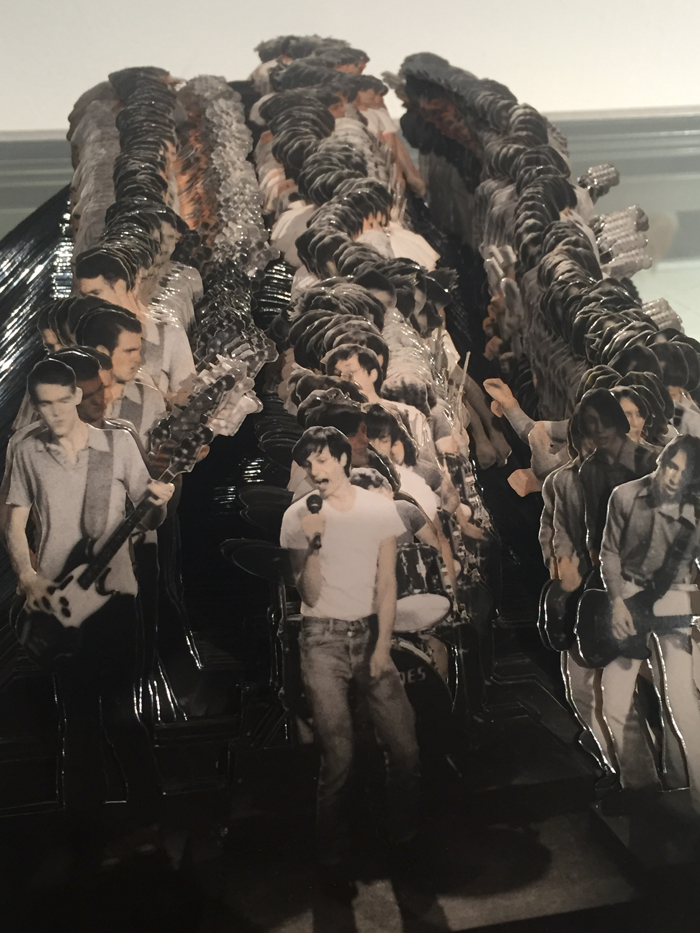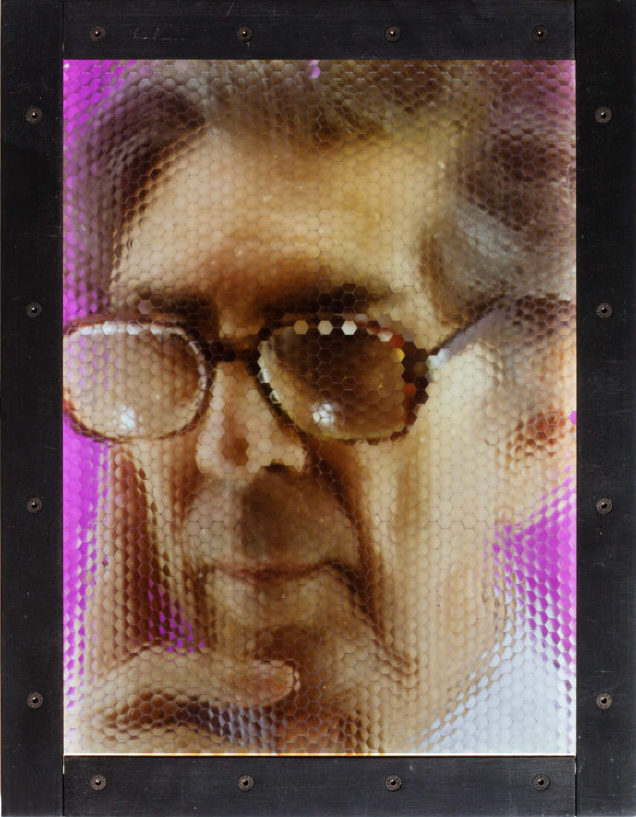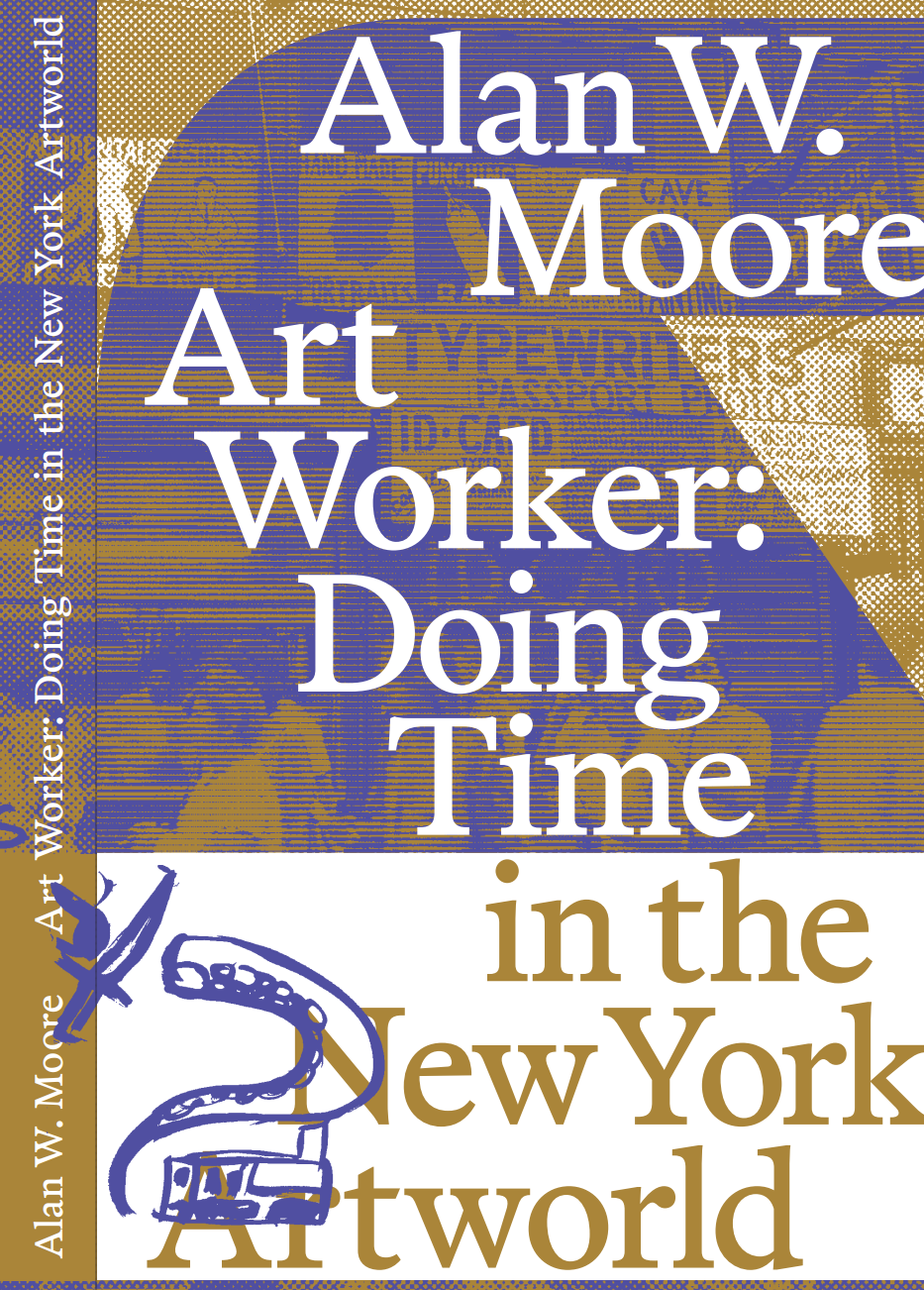
M. Henry Jones working on Go-Go Girl, a “stroboscopic wheel” inspired by early moving picture devices like the kinetoscope and the zoetrope, 2016. Photo by Marc H Miller.
Gallery 98 is sad to relay the passing of M. Henry Jones, a singular artist whose animated films, kinetic sculpture, and 3-dimensional photographs provide a fortuitous glimpse of future advances in technology, as well as the impact these changes had on art.
As an early participant in the East Village art scene, Jones was part of a gifted group of artists that included Keith Haring, Kenny Scharf and John Sex, all of whom attended the School of Visual Arts, and later helped create the nightclub-infused art celebrated in MoMA’s 2018 exhibition Club 57: Film, Performance, and Art in the East Village, 1978–1983. Much of Jones’ early art connects to the downtown music scene and was first shown in nightclubs as an innovative form of multi-media entertainment.
Fans of Jones often refer to him as a “technical genius” but he is probably better described as a forward-looking visionary blessed with stubborn perseverance. Because his first works date nearly a decade before the widespread use of computers and digitization, Jones was restricted to labor-intensive analogue techniques to create effects that would soon be facilitated by digital programs like Photoshop. Today we marvel not only at the visual effects he produced but also at the arduous, time-consuming processes he needed to use to achieve them. In hindsight it becomes clear that the technology itself was the true subject of Jones’ work, as well as its most important component.
Please visit Gallery 98’s online exhibition Photo Cut-Outs: From M. Henry Jones’ Animated Film Soul City, 1977-79.
Jones is also central to our exhibition about one of his mentors, Roger Lannes de Montebello (1908-1986): An Artist’s 40-Year Quest for 3-D Photography.
M. Henry Jones, Soul City, 1977-79
Click to view
Soul City was Jones’s senior project at the School of Visual Arts. In the days before digitization and Photoshop, the seemingly simple idea of combining a musical performance by the Fleshtones with a stroboscopic background, proved to be a daunting two-year task that required hand-cutting 1700 photographs, and then reshooting them one frame at a time with different color backgrounds.
M. Henry Jones, hand-colored photo cut-outs created for the animated film Soul City, 1977-79

Some of the 1700 photo cut-outs used in M. Henry Jones’ animated film Soul City.
Photo by Jonathan Shorr
The raw material for Soul City consisted of 1700 individually printed photographs, each hand-cut with an X-Acto knife, hand-colored and then reshot frame-by-frame with changing backgrounds. Today these photographs stand on their own both as beautiful objects, and as artistic records of the creative effort that preceded the digital revolution.
Portrait of M. Henry Jones by Roger de Montebello, integram 3D photograph, 1985/86

Roger de Montebello, portrait of M. Henry Jones, integram 3D photograph lit from behind, 1985/86. Size: 8.5 x 10.5 x .75 inches
In the mid-1980s Jones began working with the artist-inventor Roger Lannes de Montebello aiding him in his quest to create 3-dimensional photographs. Building on earlier theories, de Montebello developed a new type of camera that produced individual transparencies each consisting of 2,644 separate exposures. When such a transparency is seen through a specially designed “lens-viewing screen,” the multiple exposures merge into a single 3-D image that changes depending on the viewer’s position.
Portrait of Roger de Montebello incorporating new technology by M. Henry Jones, integram 3D photograph, 1985-2005

M. Henry Jones, portrait of Roger de Montebello, integram 3D photograph with new technology developed by Jones, 1985-2005. Size: 11.5 x 15 x 1.5 inches
Following de Montebello’s death in 1986, Jones improved his mentor’s system by dramatically increasing the size of the photographs and the seamlessness of their 3-D effect. While today holograms and computer-assisted digital animation dominate the commercial market for 3-D, de Montebello’s and Jones’s photographs have a distinctive look, as well as an instructional component that presents an example of a pre-digital 3-D model.












